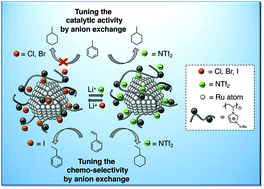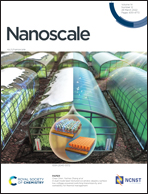Tuning the activity and selectivity of polymerised ionic liquid-stabilised ruthenium nanoparticles through anion exchange reactions†
Abstract
The development of highly active and selective heterogeneous-based catalysts with tailorable properties is not only a fundamental challenge, but is also crucial in the context of energy savings and sustainable chemistry. Here, we show that ruthenium nanoparticles (RuNPs) stabilised with simple polymerised ionic liquids (PILs) based on N-vinyl imidazolium led to highly active and robust nano-catalysts in hydrogenation reactions, both in water and organic media. Of particular interest, their activity and selectivity could simply be manipulated through counter-anion exchange reactions. Hence, as a proof of concept, the activity of RuNPs could be reversibly turned on and off in the hydrogenation of toluene, while in the case of styrene, the hydrogenation could be selectively switched from ethylbenzene to ethylcyclohexane upon anion metathesis. According to X-ray photoelectron spectroscopy (XPS) and dynamic light scattering (DLS) analyses, these effects could originate not only from the relative hydrophobicity and solvation of the PIL corona but also from the nature and strength of the PIL–Ru interactions.



 Please wait while we load your content...
Please wait while we load your content...